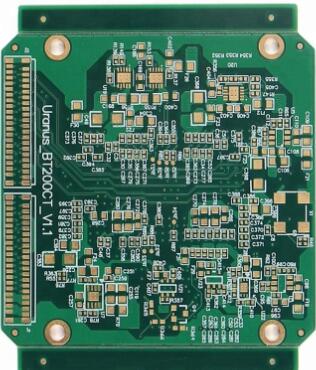The difference between PCBA and PCB board is as follows:
1.The difference in function
The role of PCB is to make a program (including data) that cannot run independently in a multi-program environment, become a basic unit that can run independently, a process that can be executed concurrently with other processes; it is a process that can be executed by the process scheduler in the process. The program code segment is executed on the CPU.
Excellent circuit design in PCBA can save production costs and achieve good circuit performance and heat dissipation performance.
2. Essentially different
PCB is the only sign of the existence of a process, and the PCB process control block is a static description of the process. PCB is the support of electronic components and the provider of circuit connection of electronic components.
The PCBA is essentially a production process, and the empty PCB board goes through the SMT assembly or the entire manufacturing process of the DIP plug-in.

From the above introduction, it can be seen that PCBA generally refers to a processing process, which can also be understood as a finished circuit board, that is, PCBA can be counted after all the processes on the PCB board are completed. The PCB refers to an empty printed circuit board with no parts on it.
So in general: PCBA is a finished board; PCB is a bare board.
Extended information:
Main applications of PCB:
1. Smart phone
In order to fit all the chips on the front and back sides of the iPhone 4 in a very small PCB area, the Any Layer HDI board can avoid the waste of space caused by booting or drilling, and achieve the purpose of enabling any layer to be conductive.
2. Computer
Gartner analysts pointed out that notebook computers have been the growth engine of the personal computer market in the past five years, with an average annual growth rate of nearly 40%. It is expected that Any Layer HDI will be used in more and more high-end mobile phones and tablets in the future.
3. E-book
The design trend of PCB boards for e-books: First, the number of layers is required to increase; second, the blind and buried via process is required; third, the PCB substrate suitable for high-frequency signals is required.
PCB is a bare board; PCBA is a finished board;
PCB features:
1. High wiring density, small size and light weight, which is conducive to the miniaturization of electronic equipment.
2. Due to the repeatability and consistency of the graphics, the wiring and assembly errors are reduced, and the maintenance, debugging and inspection time of the equipment is saved.
3. It is conducive to mechanization and automatic production, which improves labor productivity and reduces the cost of electronic equipment.
4. The design can be standardized to facilitate interchangeability.
PCB is the abbreviation of Printed Circuit Board, translated into Chinese is called printed circuit board, because it is made by electronic printing, it is called "printed" circuit board. PCB is an important electronic component in the electronics industry, a support for electronic components, and a carrier for electrical connection of electronic components. PCB has been extremely widely used in the manufacturing of electronic products, the reason why it can be widely used
PCBA features:
It is the abbreviation of Printed Circuit Board + Assembly, which means that PCBA passes through the entire manufacturing process of PCB blank board SMT and then the DIP plug-in.
Note: SMT and DIP are both ways to integrate parts on the PCB. The main difference is that SMT does not need to drill holes in the PCB. In DIP, the PIN pins of the parts need to be inserted into the holes that have been drilled.
SMT (Surface Mounted Technology) surface mount technology mainly uses mounters to mount some tiny parts on the PCB. The production process is: PCB board positioning, solder paste printing, mounter mounting, and reflow Furnace and finished inspection.
DIP stands for "plug-in", that is, inserting parts on the PCB board. This is the integration of parts in the form of plug-ins when some parts are larger in size and are not suitable for placement technology. The main production process is: sticking adhesive, plug-in, inspection, wave soldering, printing and finished inspection.
1) What are PCB and PCBA:
PCB----Printed Circuit Board
PCBA---- Printed Circuit Board +Assembly circuit board assembly product
2) Difference:
1. The PCB does not have any components
2. PCBA is the electronic components required by the manufacturer to solder and assemble on the PCB board through SMT or plug-in processing after obtaining the PCB as the raw material, such as IC, resistor, capacitor, crystal oscillator, transformer and other electronic components. The high temperature heating of the reflow oven will form a mechanical connection between the components and the PCB board, thereby forming a PCBA.
Tip: PCBA is the abbreviation of Printed Circuit Board+ Assembly in English. Simply put, the empty PCB board goes through SMT loading, and then goes through the entire process of DIP plug-in, referred to as PCBA. In layman's terms, PCB is a circuit board without components, PCBA It is a circuit board on which electronic components are soldered.
PCB refers to an empty board without components attached,
PCBA refers to the board after the components are pasted